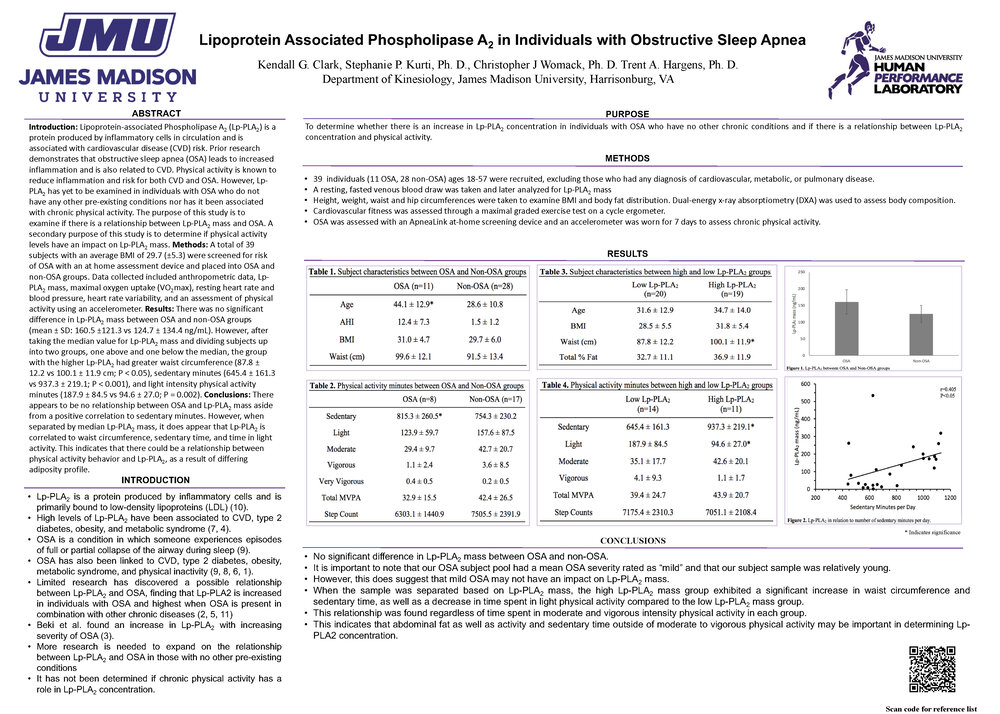Lipoprotein Associated Phospholipase A2 in Individuals with Obstructive Sleep Apnea
Kinesiology
Advisors: Stephanie Kurti, Ph.D., Christopher Womack, Ph.D. and Trent Hargens, Ph.D.
Lipoprotein Associated Phospholipase A2 (Lp-PLA2) is a blood marker which has been linked to chronic conditions such as cardiovascular disease, type 2 diabetes, and metabolic syndrome. Obstructive sleep apnea (OSA) is a condition in which someone experiences episodes of full or partial collapse of the airway during sleep and has also been linked to multiple chronic conditions. Previous studies have found Lp-PLA2 to be increased with increasing OSA severity and in individuals diagnosed with OSA in addition to other chronic conditions. However, there has been minimal research to determine the relationship between the blood marker and OSA in those with no other pre-existing conditions. Additionally, it has not been determined if chronic physical activity has a role in Lp-PLA2 concentration. Thirty-nine individuals (11 OSA, 28 non-OSA) were recruited, excluding those who had any pre-existing chronic diseases. Anthropometric and cardiovascular fitness data was obtained upon a visit to the lab as well as a venous blood draw. OSA was assessed with an ApneaLink at-home screening device and an accelerometer was worn for 7 days to assess chronic physical activity. We found no significant difference in Lp-PLA2 mass between the OSA and non-OSA groups. It is important to note that our OSA subject pool had a mean OSA severity rated as “mild” and that our subject sample was relatively young. When the sample was separated based on Lp-PLA2 mass, the high Lp-PLA2 group exhibited a significant increase in waist circumference and sedentary time, as well as a decrease in time spent in light physical activity compared to the low Lp-PLA2 mass group, regardless of time spent in moderate and vigorous intensity physical activity in each group. This indicates that abdominal fat as well as activity and sedentary time outside of moderate to vigorous physical activity may be important in determining Lp-PLA2 concentration.

